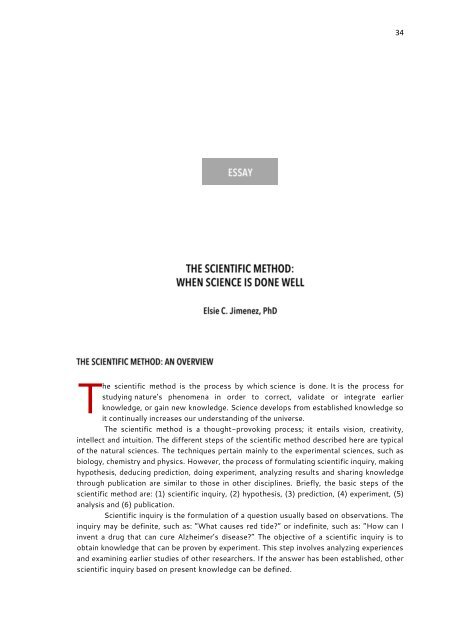A up RESEARCH GUIDEBOOK
33DSJ3
33DSJ3
Create successful ePaper yourself
Turn your PDF publications into a flip-book with our unique Google optimized e-Paper software.
T<br />
he scientific method is the process by which science is done. It is the process for<br />
studying nature’s phenomena in order to correct, validate or integrate earlier<br />
knowledge, or gain new knowledge. Science develops from established knowledge so<br />
it continually increases our understanding of the universe.<br />
The scientific method is a thought-provoking process; it entails vision, creativity,<br />
intellect and intuition. The different steps of the scientific method described here are typical<br />
of the natural sciences. The techniques pertain mainly to the experimental sciences, such as<br />
biology, chemistry and physics. However, the process of formulating scientific inquiry, making<br />
hypothesis, deducing prediction, doing experiment, analyzing results and sharing knowledge<br />
through publication are similar to those in other disciplines. Briefly, the basic steps of the<br />
scientific method are: (1) scientific inquiry, (2) hypothesis, (3) prediction, (4) experiment, (5)<br />
analysis and (6) publication.<br />
Scientific inquiry is the formulation of a question usually based on observations. The<br />
inquiry may be definite, such as: “What causes red tide?” or indefinite, such as: “How can I<br />
invent a drug that can cure Alzheimer’s disease?” The objective of a scientific inquiry is to<br />
obtain knowledge that can be proven by experiment. This step involves analyzing experiences<br />
and examining earlier studies of other researchers. If the answer has been established, other<br />
scientific inquiry based on present knowledge can be defined.<br />
34




